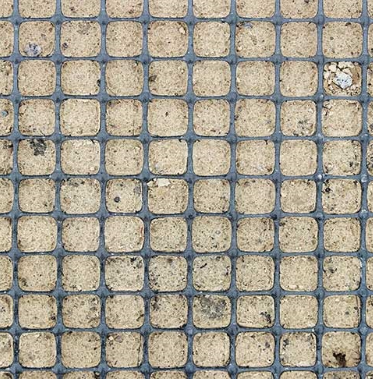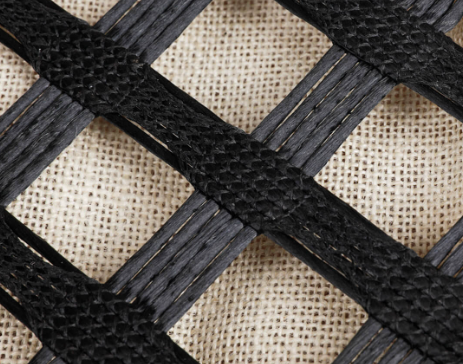- Understanding the Role of Geomembrane Liners in Waste Management
- Innovations in Geomembrane Liners for Water Management
- Geomembrane Liners: A Comprehensive Guide
- The Future of Geomembrane Liners in Civil Engineering
- Geomembrane Liners: Enhancing Landfill Stability
Manager:
WhatsApp:+86 177 0135 2670
Tel:+86 177 0135 2670
Email:marketing@okorder.com
Address:3rd Floor, No.2 Building, No.1 Sanlihe Road
What can I use instead of geogrid?
Geogrids have become a fixture in different construction projects for stability, reinforcement, and soil retention. However, some situations require looking at alternatives to the conventional materials such as plastics, fibreglasses and glassfibres used in making geogrids. These substitutes may be sought due to cost implications, environmental considerations or specific project demands among others. In this write-up we explore different alternatives for geogrids and their appropriateness in various applications.

Synthetic Geogrid Alternatives
For being durable and yet cheap plastic geogrids are widely used in construction activities. Nonetheless, its environmentally friendly nature and longevity issues necessitate finding another way out.
One option is biodegradable geogrid that is made from natural materials like jute or coir as an alternative to plastic ones. The fact that these can degrade once disposed of make them suitable options for erosion control purposes or stabilizing soils as any other plastic grids do.
Moreover, recycled plastic geogrid could be another choice. These types of grids incorporate post-consumer waste or post-industrial product waste thus reducing demand for virgin plastics while producing similar performance levels like the ones offered by the normal types.
Substitutes with Wholesale Geogrid
Due to bulk buying wholesale geogrids may be preferred for massive undertakings but there are always alternatives available where one needs diversity.
An example of an alternate product would be woven Geotextiles instead of wholesale geogrids. Although these cannot be considered strictly as a type of geometric grid fabric woven into geo-textiles has comparable effects on stabilization of soil at a reasonable price hence competitive prices will have been reached upon by both parties involved in the transaction. What’s more woven geo-textiles can be customized towards fitting specific project demands making them versatile particularly during road building, embankment construction and erosion control.
Therefore, geocells can be used as another substitute. These are three-dimensional honeycomb structures made of high density polyethylene (HDPE). Geocells have the ability to confine soil or aggregate fill, thus spreading loads efficiently and enhancing load-bearing capacity. Although they may initially cost more than wholesale geogrids, geocells save on maintenance costs in the long run since their lifespan is longer.
Fiberglass Geogrid Replacements
Fiberglass grids have got a reputation for their high tensile strength, together with being corrosion resistant hence making them appropriate for environments needing long-term endurance. Nevertheless, alternatives to fiberglass geogrids could provide similar performance benefits.
In particular, steel wire mesh can be considered as an alternative. Besides being traditionally applied in concrete reinforcement, it can also find its place in soil stabilizing or reinforcement cases. Steel wire mesh is highly tensile with great resistance against deformation thus well-suited for heavy-duty applications such as retaining wall constructions and slope stabilizations.
Another option is polyester geogrids instead of fiberglass ones. For outdoor use polyester geogrids offer maximum tensile strength plus they do not get affected by UV rays at all. Moreover, these types of grids are lightweight and easy to handle which shortens installation time and labour cost when compared to fibre glass types.
glassfiber geogrid Alternatives
Glassfiber grids are known for their creep resistance and elastic moduli which make them ideal materials for long term stability projects. Nonetheless there exist other choices that simulate the properties of glass-fiber reinforced composites with additional advantages over them.
For example basalt fiber geogrids can be used instead of glassfiber ones. Basalt fiber geogrids are derived from naturally occurring rocks made from basalt hence having a good tensile strength property resistant against chemical attacks and environmental deterioration caused by harsh conditions. Above all else, basalt fiber geogrids are non-corrosive and have low electric conductivity thereby rendering them as suitable materials for problematic cases such as corrosions and electrical currents.
Aramid fiber geogrids are a different kind of substitute. In some cases, aramid fiber geogrids surpass even the glassfiber geogrids in terms of tensile strength and modulus of elasticity. Additionally, aramid fiber geogrids are also light weight and flexible making them easier to handle and install.

In other words
Geogrids have always been the choice for soil reinforcement as well as stabilization but there is a way out for those who might want cheaper choices or even environment friendly ones. Whether it calls for replacement of plastic, wholesale fiberglass, or glassfiber geogirds among others, one has to consider factors like project requirements, environmental aspects as well as long term performance. By doing this, builders can find alternatives that work for their particular needs while at the same time promote sustainable actions in the industry through innovation."
- Previous:Is geogrid directional?
- Next:How many layers of geogrid do I need?
-
2024-06-12Asphalt fiberglass geogrid construction plan
-
2024-06-04Asphalt fiberglass geogrid construction plan
-
2024-05-21What is the disadvantage of geogrid?
-
2024-05-21What is the lifespan of geogrid?
-
2024-05-21What are the 3 main uses of a geotextile?






